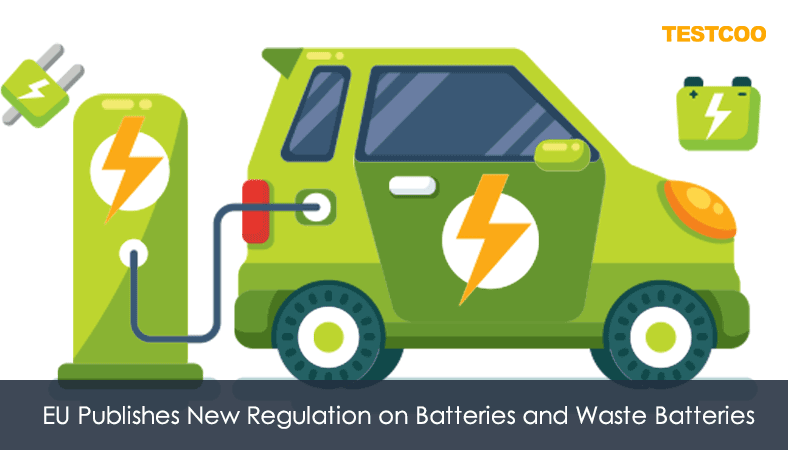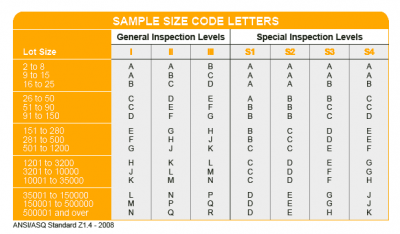EU Publishes New Regulation on Batteries and Waste Batteries

The EU adopted a new regulation that strengthens sustainability rules for batteries and waste batteries on 10 July 2023. The regulation will regulate the entire life cycle of batteries – from production to reuse and recycling – and ensure that they are safe, sustainable and competitive.

Dated 9 December 2022 and awaiting publication, the final text of the regulation was agreed between the European Commission, Parliament and Council. It is a legislative initiative and part of the European Green Deal, a package of proposals by the European Commission to modernise the economy and transform climate, energy, transportation, environment and fiscal policies with the objective of reducing net greenhouse gas emissions by at least 55% compared to 1990 levels by 2030 and reaching climate neutrality by 2050.
Beginning June 2023, the European Battery Regulation will be gradually replacing Directive 2006/66/EC. It will be implemented in all the member countries simultaneously for the common purpose of minimising the harmful effects of batteries on the environment.
For the first time, the new requirements will cover the entire lithium battery life cycle (from extraction of the raw material to production, design, labelling, traceability, collection, recycling and reuse).
The regulation of the European Parliament and the Council will apply to all batteries including:
1. All waste portable batteries
2. Electric vehicle batteries
3. Industrial batteries
4. Starting, lightning and ignition (SLI) batteries (used mostly for vehicles and machinery)
5. Batteries for light means of transport (e.g. electric bikes, e-mopeds, e-scooters).
Chapter 1. Sustainability and safety requirements
Restrictions on Substances
Batteries shall not contain substances as following table to this Regulation contains a restriction unless the conditions of that restriction are complied with.
Column 1 Designation of the substance or group of substances | Column 2 Conditions of restriction |
1. Mercury CAS No. 7439-97-6 EC No. 231-106-7 and its compounds | Batteries, whether or not incorporated into appliances, light means of transport or other vehicles, shall not contain more than 0,0005 % of mercury (expressed as mercury metal) by weight. |
2. Cadmium CAS No. 7440-43-9 EC No. 231-152-8 and its compounds | Portable batteries, whether or not incorporated into appliances, light means of transport or other vehicles, shall not contain more than 0,002 % of cadmium (expressed as cadmium metal) by weight. |
3. Lead CAS No. 7439-92-1 EC No. 231-100-4 and its compounds | 1. From … [12 months after the date of entry into force of this Regulation], portable batteries, whether or not incorporated into appliances, shall not contain more than 0,01 % of lead (expressed as lead metal) by weight. 2. The restriction set out in point 1 shall not apply to portable zinc-air button cells until … [60 months after the date of entry into force of this Regulation]. |
Carbon Footprint of Electric Vehicle Batteries, Rechargeable Industrial Batteries and LMT Batteries
1. For electric vehicle batteries, rechargeable industrial batteries with a capacity greater than 2 kWh and LMT batteries a carbon footprint declaration shall be drawn up for each battery model per manufacturing plant, and containing, at least, the following information:
(a) administrative information about the manufacturer;
(b) information about the battery model;
(c) information about the geographic location of the battery manufacturing plant;
(d) the carbon footprint of the battery, calculated as kg of carbon dioxide equivalent per one kWh of the total energy provided by the battery over its expected service life;
(e) the carbon footprint of the battery differentiated;
(f) the identification number of the EU declaration of conformity of the battery;
(g) a web link giving access to a public version of the study supporting the carbon footprint values referred to in points (d) and (e).
2. Electric vehicle batteries, rechargeable industrial batteries with a capacity greater than 2 kWh and LMT batteries shall bear a conspicuous, clearly legible and indelible label indicating the carbon footprint of the battery and declaring the carbon footprint performance class to which the relevant battery model per manufacturing plant corresponds.
3. For electric vehicle batteries, rechargeable industrial batteries with a capacity greater than 2 kWh and LMT batteries, the technical documentation shall demonstrate that the declared life cycle carbon footprint value for the relevant battery model per manufacturing plant, is below the maximum threshold established in the delegated act.
Recycled Content in Industrial Batteries, Electric Vehicle Batteries, LMT Batteries and SLI Batteries
Industrial batteries with a capacity greater than 2 kWh, except those with exclusively external storage, electric vehicle batteries and SLI batteries that contain cobalt, lead, lithium or nickel in active materials, shall be accompanied by documentation containing information about:
1. the percentage share of cobalt, lithium or nickel that is present in active materials and that has been recovered from battery manufacturing waste or post-consumer waste,
2. the percentage share of lead that is present in the battery and that has been recovered from waste, for each battery model per year and per manufacturing plant.
Performance and Durability Requirements for Portable Batteries of General Use
Portable batteries of general use, excluding button cells, shall meet the minimum values for the electrochemical performance and durability parameters.
Parameters for non-rechargeable batteries:
1. Minimum average duration: minimum average time reached by a sample of batteries on discharge when used under specific conditions, such as temperature and relative humidity.
2. Delayed discharge performance: the relative decrease of the minimum average duration, with the initially measured minimum average duration as the reference point, after a defined period and under specific conditions, such as temperature and relative humidity.
3. Resistance to leakage: resistance to unplanned escape of electrolyte, gas or other material.
Performance and durability requirements for rechargeable industrial batteries, LMT batteries and electric vehicle batteries
Rechargeable industrial batteries with a capacity greater than 2 kWh, LMT batteries and electric vehicle batteries shall be accompanied by a document containing values for the electrochemical performance and durability parameters.
Removability and replaceability of portable batteries and LMT batteries
1. Any natural or legal person that places on the market products incorporating portable batteries shall ensure that those batteries are readily removable and replaceable by the end-user at any time during the lifetime of the product. That obligation shall only apply to entire batteries and not to individual cells or other parts included in such batteries.
2. A portable battery shall be considered readily removable by the end-user where it can be removed from a product with the use of commercially available tools, without requiring the use of specialised tools, unless provided free of charge with the product, proprietary tools, thermal energy, or solvents to disassemble the product.
3. Any natural or legal person that places on the market products incorporating portable batteries shall ensure that those products are accompanied with instructions and safety information on the use, removal and replacement of the batteries. Those instructions and that safety information shall be made available permanently online, on a publicly available website, in an easily understandable way for end-users.
Chapter 2. Labelling, marking and information requirements
Labelling and Marking of Batteries
1. Batteries shall bear a label containing the general information on batteries.
Information on the label of a battery shall comprise the following information regarding the battery:
(1). manufacturer information;
(2). battery information;
(3). the place of manufacture (geographical location of a battery manufacturing plant);
(4). the date of manufacture (month and year);
(5). the weight;
(6). the capacity;
(7). the chemistry;
(8). the hazardous substances present in the battery, other than mercury, cadmium or lead;
(9). usable extinguishing agent;
(10). critical raw materials present in the battery in a concentration of more than 0,1 % weight by weight.
2. Non-rechargeable portable batteries shall bear a label containing information on their minimum average duration when used in specific applications and a label indicating ‘non-rechargeable’.
3. All batteries shall be marked with the symbol for separate collection of batteries (‘separate collection symbol’) as shown following:

Symbol for separate collection of batteries
The separate collection symbol shall cover at least 3 % of the area of the largest side of the battery up to a maximum size of 5 × 5 cm. In the case of cylindrical battery cells, the separate collection symbol shall cover at least 1,5 % of the surface area of the battery and shall have a maximum size of 5 × 5 cm.
Where the size of the battery is such that the separate collection symbol would be smaller than 0,47 × 0,47 cm, the battery does not need to be marked with that symbol. Instead, a separate collection symbol measuring at least 1 × 1 cm shall be printed on the packaging.
4. All batteries containing more than 0,002 % cadmium or more than 0,004 % lead, shall be marked with the chemical symbol for the metal concerned: Cd or Pb. The relevant chemical symbol indicating the heavy metal content shall be printed beneath the separate collection symbol and shall cover an area of at least one-quarter the size of that symbol.
5. All batteries shall be marked with a QR code.
The QR code shall be in high contrast to the background colour and of a size that is easily readable by a commonly available QR reader, such as those integrated in hand-held communication devices.

6. For LMT batteries, industrial batteries with a capacity greater than 2kWh and electric vehicles batteries, the battery passport.
For SLI batteries, the amount of cobalt, lead, lithium or nickel recovered from waste and present in active materials in the battery shall be complete, up-to-date and accurate.
7. The labels and the QR code shall be printed or engraved visibly, legibly and indelibly on the battery. Where this is not possible or not warranted on account of the nature and size of the battery, the labels and the QR code shall be affixed to the packaging and to the documents accompanying the battery.
8. The Commission is empowered to adopt delegated acts in accordance with Article 89 to amend this Regulation to provide for alternative types of smart labels for use instead of or in addition to the QR code, in view of technical and scientific progress.
9. Batteries that have been subject to preparation for re-use, preparation for repurposing, repurposing or remanufacturing shall bear new labels or shall be marked with markings.
Information on the State of Health and Expected Lifetime of Batteries
1. The parameters for determining the state of health and expected lifetime of batteries shall be contained in the battery management system of stationary battery energy storage systems, LMT batteries and electric vehicle batteries.
2. Read-only access to the data for the parameters through the battery management system shall be provided, respecting the intellectual property rights of the battery manufacturer, on a non-discriminatory basis to the natural or legal person who has legally purchased the battery, including independent operators or waste management operators, or any third party acting on their behalf at any time.
3. The battery management system shall include a software reset function, in case economic operators carrying out preparation for re-use, preparation for repurposing, repurposing or remanufacturing need to upload different battery management system software. If the software reset function is used, the original battery manufacturer shall not be held liable for any breach of the safety or functionality of the battery that could be attributed to battery management system software uploaded after that battery was placed on the market.
Chapter 3. Digital battery passport
Beginning May 2026, batteries above 2kWh placed in the Union market will be required to be electronically registered. This will be in the form of a Battery Passport carrying an identification QR Code and CE label that will ensure compliance with the safety and traceability requirements of the new European Battery Regulation.
The Battery Passport is basically a digital document that maximises the communication between manufacturers, end users and recycling operators, providing information on the carbon footprint of the battery manufacturing processes and ensuring the traceability of the batteries.
The Battery Passport will include information specific to the batteries placed on the market and their sustainability requirements. It will provide always up-to-date data on battery handling and state of health to recycling operators and those repurposing batteries for a second life.
More specifically, as a genuine identification document, the Battery Passport will be required to store the following information:
-Name of manufacturer, registered trademark.
-Type of battery and batch or serial number, or any other element that allows uniquely identifying the battery
-Battery model identifier
-Date of manufacture
-Date of placement on the market
-Chemical composition
-Potentially harmful substances contained in the battery
-Recycled raw materials contained in the battery
-Information and activities related to repair, reuse and dismantling
-Treatment, recycling and recovery methods the battery can undergo at the end of its life.
Chapter 4. Battery Safety Parameters
1. Thermal shock and cycling
This test shall be designed to evaluate changes in the integrity of the battery arising from expansion and contraction of cell components upon exposure to extreme and sudden changes in temperature, and potential consequences of such changes. During a thermal shock, the battery shall be exposed to two temperature limits and held at each temperature limit for a specified period.
2. External short circuit protection
This test shall evaluate the safety performance of a battery when applying an external short circuit. The test can evaluate the activation of the overcurrent protection device or the ability of cells to withstand the current without reaching a hazardous situation (e.g. thermal runaway, explosion, fire). The main risk factors are heat generation at cell level and electrical arcing, which can damage circuitry or lead to reduced isolation resistance.
3. Overcharge protection
This test shall evaluate the safety performance of a battery in overcharge situations. The main safety risks during overcharge are the decomposition of the electrolyte, cathode and anode breakdown, exothermic decomposition of the solid electrolyte interphase (SEI) layer, separator degradation, and lithium plating, which can lead to self-heating of the battery and thermal runaway. The factors affecting the outcome of the test shall, as a minimum, include, the charging rate and the finally reached state of charge. The protection can be ensured either by voltage control (interruption after reaching the limit charging voltage) or current control (interruption after exceeding maximum charging current).
4. Over-discharge protection
This test shall evaluate the safety performance of a battery in over-discharge situations. Safety risks during over-discharge include polarity reversal leading to oxidation of the anode current collector (Copper) and to plating on the cathode side. Even minor overdischarge can cause dendrite formation and ultimately short-circuiting.
5. Over-temperature protection
This test shall evaluate the effect of temperature control failure or failure of other features for protection against internal overheating during operation.
6. Thermal propagation protection
This test shall evaluate the safety performance of a battery in thermal propagation situations. A thermal runaway in one cell can cause a cascading reaction throughout the entire battery which can be composed of numerous cells. It can lead to severe consequences including a significant gas release. The test shall take into account the tests that are under development for transport applications by ISO and the UN Global Technical Regulation.
7. Mechanical damage by external forces
These tests shall simulate one or more situations in which a battery is accidentally exposed to mechanical stresses and remains operational for the purpose for which it was designed. The criteria to simulate these situations should reflect real life uses.
8. Internal short circuit
This test shall evaluate the safety performance of a battery in internal short-circuit situations. The occurrence of internal short circuits, one of the main concerns for battery manufacturers, potentially leads to venting, thermal runaway, and sparking which can ignite the electrolyte vapours escaping from the cell. The generation of such internal short circuits can be triggered by manufacturing imperfections, the presence of impurities in the cells or dendritic growth of lithium, and is the cause of most in-field safety incidents. Multiple internal short circuit scenarios are possible (e.g. electrical contact of cathode/anode, aluminium current collector/copper current collector, aluminium current collector /anode) each with a different contact resistance.
9. Thermal abuse
During this test, the battery shall be exposed to elevated temperatures (in IEC 62619 the temperature is 85 °C) which can trigger exothermal decomposition reactions and lead to a thermal runaway in the cell.
10. Fire test
The risk of explosion shall be assessed by exposing the battery to fire.
11. Emission of gases
Batteries can contain significant amounts of potentially hazardous materials, for example highly flammable electrolytes, corrosive and toxic components. If exposed to certain conditions, the integrity of the battery could be compromised, resulting in the release of hazardous gases.
Chapter 5. List of raw materials and risk categories
1. Raw materials:
(a) cobalt;
(b) natural graphite;
(c) lithium;
(d) nickel;
(e) chemical compounds based on the raw materials listed in points (a) to (d), which are necessary for the manufacturing of the active materials of batteries.
2. Social and environmental risk categories:
(a) environment, climate and human health, considering direct, induced, indirect and cumulative effects, including:
(i) air, including air pollution such as greenhouse gas emissions,
(ii) water, including seabed and marine environment, and including water pollution, water use, water quantities (flooding or droughts) and access to water,
(iii) soil, including soil pollution, soil erosion, land use and land degradation,
(iv) biodiversity, including damage to habitats, wildlife, flora and ecosystems, including ecosystem services,
(v) hazardous substances,
(vi) noise and vibration,
(vii) plant safety,
(viii) energy use,
(ix) waste and residues;
(b) human rights, labour rights and industrial relations, including:
(i) occupational health and safety,
(ii) child labour,
(iii) forced labour,
(iv) discrimination,
(v) trade union freedoms;
(c) community life, including that of indigenous peoples.
Chapter 6. Recycling and Recovery of End-of-Life Batteries
The European Battery Regulation aims at promoting the circular economy along the entire battery life cycle and to do this, it has set out end-of-life requirements, including targets and obligations regarding material and waste battery recovery by manufacturers.

To indicate the provisions on their recycling, batteries will be required to carry the crossed-out waste bin symbol from May 2025. This points out that they may not be discarded as unsorted municipal waste but, instead, must be collected separately as WEEE (waste electrical and electronic equipment) by specialised centres.
Moreover, to compensate for the mineral shortage by partly reducing supplies from mineral deposits in favor of secondary sources and avoid as a consequence the carbon dioxide emissions that would result from their transport, the regulation sets the required minimum percentage amount of minerals coming from recycling that batteries in several categories must contain. As soon as May 2028, industrial, electric vehicle and automotive batteries must come with documentation reporting the amount of elements from secondary raw materials.
Read more: Regulation on batteries and waste batteries
Free Sample Report Performance Quality Control
Download a sample report to keep control of your supply chain!
Featured Articles
 AQL Table | How to Read It
AQL Table | How to Read It TOP 10 Common Defects in Garments Quality Inspection
TOP 10 Common Defects in Garments Quality Inspection Product Packaging and Shipment Label requirements for Amazon FBA
Product Packaging and Shipment Label requirements for Amazon FBA What Is ASTM-F2413-18? Protective Footwear Standard
What Is ASTM-F2413-18? Protective Footwear Standard How to Conduct Third-Party Quality Control Inspections for Electric Scooters
How to Conduct Third-Party Quality Control Inspections for Electric Scooters SMETA Audit-What is SMETA Audit?
SMETA Audit-What is SMETA Audit? TESTCOO Supplier Verification/Certification Service SLCP, Higg FEM, GRS, GOTS
TESTCOO Supplier Verification/Certification Service SLCP, Higg FEM, GRS, GOTS Quality Control Inspection Company in China
Quality Control Inspection Company in China What is Quality Inspection? A Complete Guide
What is Quality Inspection? A Complete Guide Guidelines for Product Inspection in India
Guidelines for Product Inspection in India
Category
- Production Inspection Service
- Factory Audit
- Softline Inspection
- Hardline Inspection
- Electrics Inspection
- Certification
- Checklist
- Manufacturers
- Quality Assurance Basics
- Products Recall
- AQL
- Guidence and Standard
- News
- Supplier Management
- Amazon
- Protective Equipment
- e-commerce quality control
- Indian Manufacturing
- Soft Goods Quality Control
- Supply Chain Management
- Supply Chain Resilience
- E-Commerce Quality Control
- ISO 2859
- Supply Chain Optimization
- Garment Industry
- Higg Index



